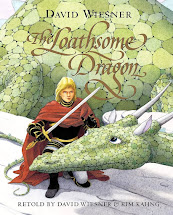The last published book in the series dealt with the canonization of a saint: Saint of Mars, A Rhys and Lider Detective Novel.
The new book will tackle another canonization, only this time on Earth. The potential saint is a medieval Siphon or mermaid. Politics complicate the investigation, but the biggest snag is trying to prove that a medieval personage existed in the first place.
Preparing for this book involved my favorite type of research, research where there isn't a great deal of definitive proof. I pieced together information and lore and scholarly guesses from the so-called Dark Ages, the period of time in England after the Romans departed (c. 410 C.E.) before Alfred the Great commissioned the Anglo-Saxon Chronicle--that is, the period of time with no writing other than the Christian missionaries who dared inform a bunch of axe-wielding Saxons, "Actually, we think this is the better god for you."
The piecing-together process was loads of fun!
And I discovered a number of folktales, which I will be sharing between now and early May.
Laidly Wyrm
The saint's story begins in Bamburgh Castle, which meant that I started by hunting up Northumbrian folklore. I came across The Laidly Wyrm, a tale associated directly with Bamburgh Castle about a young princess transformed into a dragon who is then rescued by her brother. This tale forms the background for my saint. I also learned a great deal about the actual castle. I highly recommend this Time Team episode with Tony Robinson as the marvelous host: Castle of the Saxon Kings.
The tale was published in the eighteenth century but reportedly comes from an older manuscript. I pushed the tale back to the sixth century.
King Arthur
That time period naturally requires the appearance of King Arthur. My fictional investigators, a group of scholars and forensic specialists, bemoan the arrival of King Arthur tales in their lives, mostly because there is no conclusive proof of his existence and people cannot even agree on the dates.
There is enough possible evidence to say that he may have been a warlord serving under Aurelius Ambrosius, who likely existed since Gildas mentions him (but maybe not since Gildas is writing after the events). Aurelius Ambrosius may have fought at the Battle of Badon (location unknown), which battle may have taken place in the sixth century or earlier.I place Aurelius and therefore Arthur in the sixth century to correspond to when Bamburgh Castle changed hands from Celts to Angles, from the Goddodin to King Ida of Bernicia.
The most interesting research I turned up on Arthur, however, was that tales of Arthur show up in Carlisle, which is near Hadrian's Wall. I have always associated Arthur primarily with Cornwall. But his tales are far more extensive.The reason is likely linked to the perspective of the medieval chroniclers. Those chroniclers promoted the idea of a unified Celtic and then Anglo-Saxon kingdom early on, a reality that nearly came about during the Northumbrian Golden Age and then under King Alfred but frankly wasn't a reality until the late tenth century when writers began to refer to an "English" people.
But the tendency to see in the past what is apparent in the present appears to be a human wish.






No comments:
Post a Comment